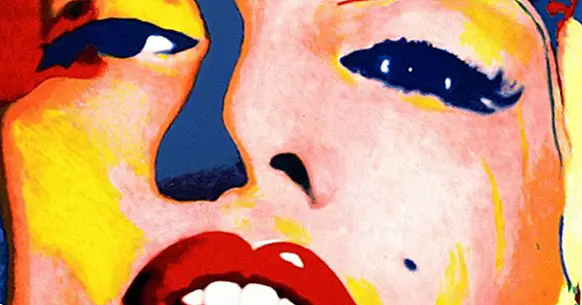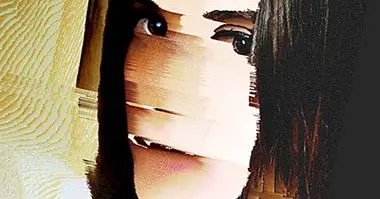Avant-garde and Contemporary Art: the social perception of the value of a work of art
"Art is fatally threatened by a society that is only enthusiastic about it in the auction room, and whose abstract logic strips the world of its sensitive quality."
Terry Eagleton
The avant-garde , or «Avant-garde art» , emerged at the beginning of the last century, was nourished by the rejection and criticism of the traditions with the purpose of transcending its historical time in a new creation. This art, revolutionary and breakthrough , typical of modernity and, therefore, akin to convulsive times when everything was possible, contrasts with current fashion, or «Postmodern art» .
The transition from avant-garde art to postmodern art apparently preserved a dissident attitude, but always in line with its introduction to the daily consumption circuit. Converted into a whole subculture, now the critical is nothing but a fashion or way of life in which the rebellious attitude finds no discrepancy whatsoever with the false fullness of a joyful life that preserves the established order of things.
The fact that postmodern art does not aspire to overcome society does not mean that it suffices from the conventions of the order established for its production, since this rather operates by creating a fault to the society that pretends to supply through its creation. It is not a question of denying society as a holistic whole, but of opening interstices in it, material or spiritual needs that must be filled by the new work.
But looking back in order to establish a certain comparison with respect to current artistic development, it can be said that, despite having a vocation to social utopia , avant-garde art tended to become an intimate creation, by Y for the author himself. On the contrary, postmodern art, lacking all social commitment, is stripped of any idealist will that transcends the established order of things, is a creation in continuous projection to the outside: It only makes sense to be spread and consumed .
This is explained by the fact that the artistic creation, arrogated by the industrial designers and the advertising agencies, it stops being in the hands of some virtuosos for whom the mass production of the work of art would have invalidated its own artistic condition: each work, if it is treated as art, should be unique and unique. Pay attention to the consideration for which art is associated with the sublime, and this is exceptional .
The popular art that becomes fashion, with pop art as an exponent, he left us cans of soup (Campbell's ) even in the soup. Screen printing, in effect, is a technique whose main characteristic is feasibility in reproduction . In the same way, fashion, in its broad sense, alludes to those repetitive tendencies, whether in dress, consumption or, ultimately, behavior.
A) Yes, although the avant-garde was part of the "high culture", a motif of distinction, fashion as an epiphenomenon of "mass culture" is homogeneous by nature , losing the abstraction that art could demand during the avant-garde and becoming a product of the most mundane and secular: art passed from the temples, in allusion to museums or theaters in which acts of worship were carried out, to the screen of television, in which each advertising commercial is itself a creation.
It is true that fashion as such does not constitute a new type of art , unlike the vanguards that were artistic movements of a specific period. In fact, fashion is an allusion to customs, not limited to the artistic field, which mark a specific time or place, so we can say that fashion was something, not already contemporary to the avant-garde, but much before them .
It happens, however, that now all art is fashion . In the artistic field, the influence of postmodernity means that trends are not the same as the development of the previous avant-gardes in which there was a progressive development in tune with a socially and technologically revolutionary century, since nowadays the tendencies of fashion are, in many cases, regressive.
Tracing the past to recover its attributes, as well as probing the future to anticipate its epithets, fashion establishes a fickle and irresolute present that is known with an expiration date: unlike avant-garde art, claimed as the spearhead of a socio-political process that guided , the current art is designed to vanish, because only by creating transient and perishable tendencies does it fulfill the purpose of creating peaks of consumption at each new appearance.
In other words, the short cycle of fashion requires instantaneous and mass sales of articles for a brief and intensive use in such a way that the novelty happens at kitsch knowing that sooner or later it will become kitsch. And having the economic return by substance, the current artistic tendencies are partial and not ecumenical , because they intend to find niche markets to occupy, to later re-reinvent.
In light of this, it is evident that, while the avant-garde art is that of the minorities that aspire to reach the majorities, the fashion art is that of the majorities that aspire to become minorities . And having no motivations, fashion looks for influences here or there, what's more: how can postmodern art accompany society if it is essentially skeptical of the existence of an objective reality and, consequently, with the possibility of transforming it.
And since postmodernity not only does not provide, but denies, the judgments about the qualitative elements, necessary to define the social reality but also the reality of the artistic work under criteria of good or bad, pretty or ugly, all what remains as the guiding principle is the amount . The principle by which the more people come to art (the more it is sold) the better it will be, makes such art an art eminently trivial . Such is the condition of mass or popular art.The work that once came to claim, sometimes as an anti-art, today takes the form of any milestone designed for (and assimilated by) the art market .
In any case,the psychological process by which the milestone comes to be conceived as a work of art is that the piece lacks a value in itself and is always subject to a factor external to its reality , as, for example, the quotation reached by the author based on highly questionable conventionalisms. In this way, just as advertising does not sell the soap bar but the idea of beauty, contemporary art is prone to offer itself as an interface of an object, or even experience, essentially symbolic .
But an art that, although considered subjective and open to all kinds of interpretation, requires an external recognition is in itself contradictory . The current work of art can also be considered a motley of images, sounds and words present in any area of our daily life. In this case the work would be everything and, in turn, it would be nothing (the performance is that work that, resisting entering the commercial circuit through which the exchange value circulates, is ephemeral due to its own idiosyncrasies).
It seems that the vanguard was strangled by the plastic rings of the cans of soda cans and its corpse was buried under liters and liters of plastic paint that, superimposing one color on another, came to form a tumulus that generated the new work of art, born directly from the ground and not from the flowers that come from it. Perhaps the ultimate purpose of art is nothing more than its lack of purpose , so, as a silent critic of instrumental rationality and market values, it acquires its purpose in gagé the autonomy of value, the reverse of capitalist utility.



















